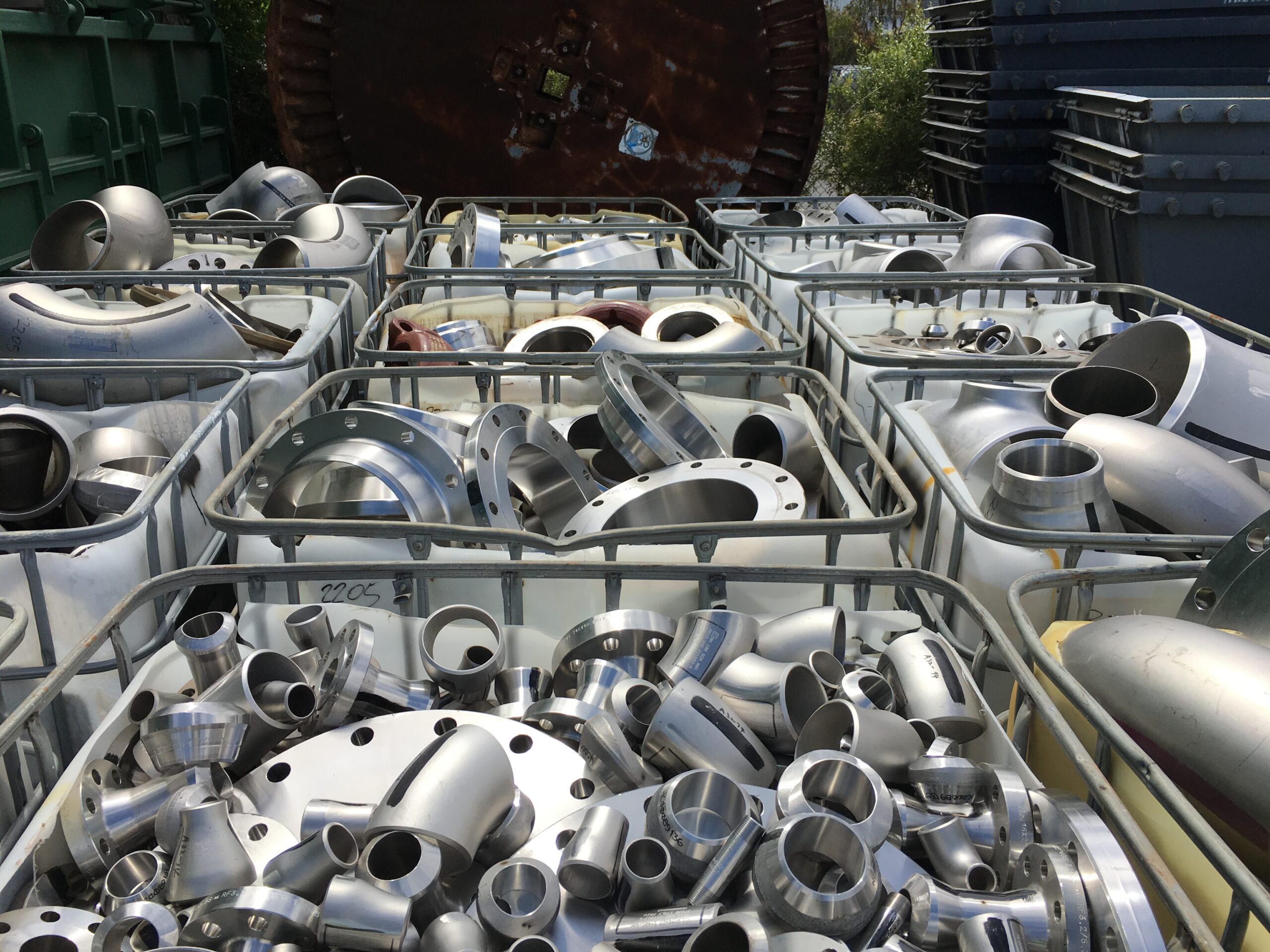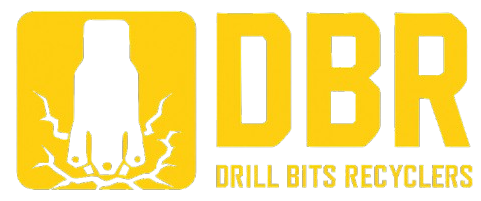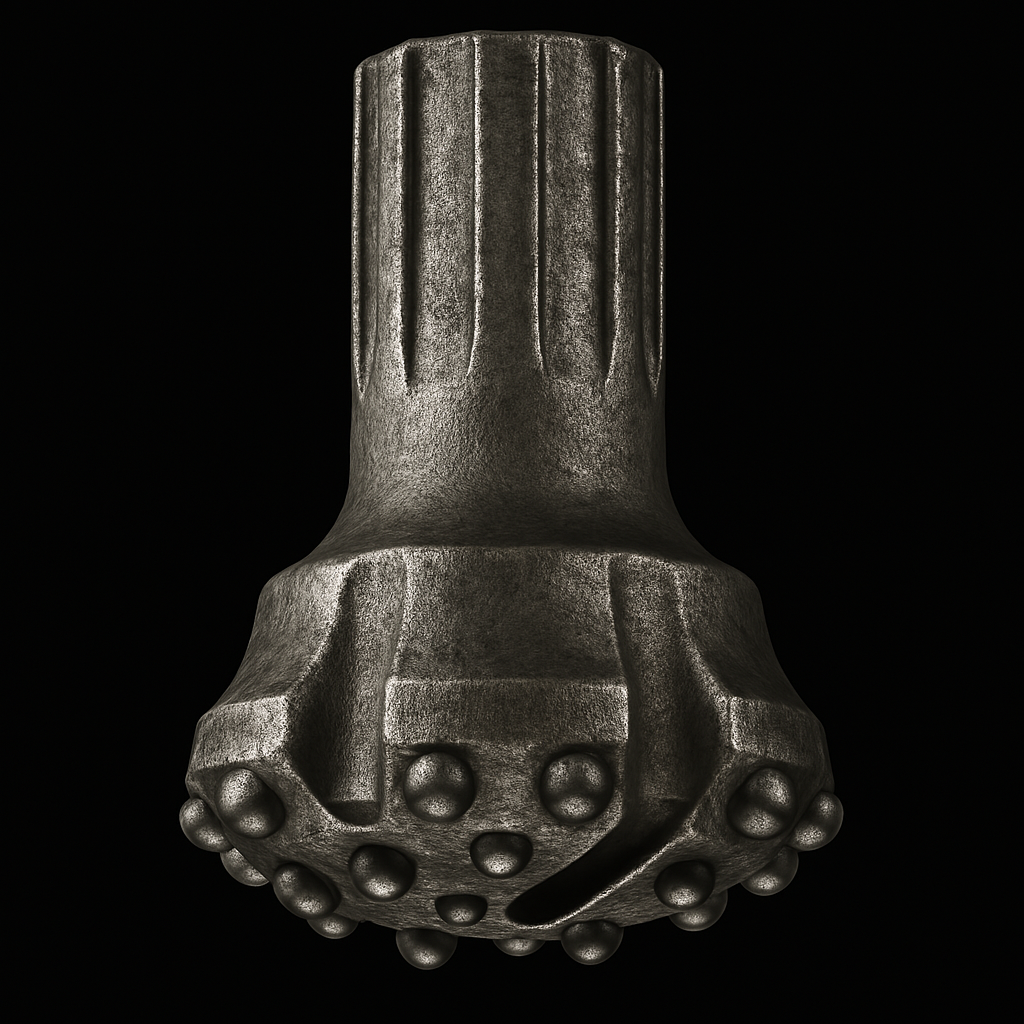Stainless Steel's Identity Crisis: When Grade Guessing Costs Money
The financial impact of material misidentification
Stainless Steel’s Identity Crisis
Not all stainless steel is created equal, but you wouldn’t know it by looking at the average scrap bin.
In WA mining and industrial operations, stainless steel is everywhere: pipes, fittings, tools, tanks, fasteners. But too often, it all ends up lumped together and sold off at the lowest possible grade. Why? Because someone guessed instead of tested.
This is stainless steel’s identity crisis, and it’s costing you money.
The difference between 304 and 316 stainless steel scrap price can be significant. And when you can’t confidently identify what’s in your load, recyclers have no choice but to price it conservatively, or worse, reject it altogether.
In this blog, we’ll break down:
- Why stainless steel grade identification matters
- How misidentification leads to lost value and ESG headaches
- Practical tools, from spark tests to XRF analysis, to get it right
- How to maximise returns through certified stainless steel recycling in WA
Whether you’re managing site scrap in the Pilbara or prepping bins for pickup in Perth, understanding what’s in your stainless pile is the first step to unlocking real value, not just recycling.
Why Stainless Steel Grade Identification Matters
When it comes to stainless steel recycling, guessing is expensive. Whether it’s a batch of pipe offcuts or a pile of mixed fittings from a shutdown, incorrectly identifying grades can mean the difference between a premium return and a heavily downgraded payout. And in large-scale WA mining operations, those losses can stack up fast.
How Grade Guessing Leads to Lost Revenue
Most stainless steel scrap buyers price based on grade and purity, not just weight. If you present a mixed batch with no clear identification, they’ll typically:
- Assume the lowest common grade, usually 304
- Offer a reduced rate per kilogram
- Deduct further if signs of contamination or coating are present
In short, when you can’t prove the grade, you won’t be paid for it.
This is especially problematic with 316 stainless, which often commands a 20 to 40% higher scrap value due to its molybdenum content and corrosion resistance, but gets paid like 304 if you can’t verify it.
Common Mistakes in Identifying 304, 316, and Other Grades
Here are a few costly missteps we see across WA worksites:
- Assuming magnetism = mild steel
(Some stainless grades are magnetic, especially after cold working) - Judging by appearance alone
(304 and 316 can look nearly identical, especially when weathered) - Skipping labelling or batch documentation
(Once parts are removed from service, their specs are often lost)
These mistakes lead to mixed scrap, lower prices, and friction with recyclers.
The Link Between Correct Identification and Higher Scrap Prices
When you can accurately identify your stainless steel, you gain:
- Negotiating power with recyclers
- Access to premium pricing tiers
- Better compliance with traceability and ESG reporting
Buyers like Drill Bits Recyclers reward clean, well-sorted loads, especially when supported by XRF data or consistent material sources.
Correct identification doesn’t just improve pricing, it builds a stronger, more transparent recycling relationship.
Stainless Steel Scrap Prices and Value
Not all stainless steel is worth the same, and in Western Australia’s competitive scrap market, knowing the differences can mean bigger returns. Whether you’re clearing out from a refinery shutdown or managing regular offcuts from drilling operations, your scrap price per kg depends on the grade, quality, and timing.
Current Stainless Steel Scrap Price Trends in WA
Stainless steel scrap prices in Perth and regional WA fluctuate based on global nickel and molybdenum markets, which directly impact the value of 304, 316, and other high-grade stainless materials.
For large-scale mining or industrial clients, recyclers like DBR offer custom quotes aligned with international commodity rates, plus support with grade verification and material handling.
Why Grade and Purity Impact the Price per Kg
Stainless steel is priced by:
- Grade composition (nickel, molybdenum, chromium content)
- Purity (clean vs contaminated, coated, or mixed metal batches)
- Market readiness (sorted, labelled, and tested materials fetch more)
If your stainless is mixed or coated, recyclers must apply discounts to account for the time and processing involved in separating materials, even if the base grade is higher value.
On the other hand, clean and well-sorted stainless scrap is easier to process, easier to export, and commands a higher per-kilo rate.
Comparing 304 vs 316 Stainless Steel Recycling Value
Here’s a quick breakdown of the two most common grades in WA mining and drilling environments:
Grade | Common Use | Price | Key Difference |
304 | General equipment, fittings, fasteners | Lower | Basic corrosion resistance, no molybdenum |
316 | Marine, chemical, and high-corrosion areas | Higher | Contains molybdenum, higher strength, more valuable |
Even a small mix-up between these grades can result in a 15 to 40% loss in scrap value if your recycler downgrades the batch. Accurate testing and sorting protect your margins.
Practical Identification Techniques for Stainless Steel
Correctly identifying stainless steel grades on-site doesn’t need to be difficult. With a few practical tools and methods, mining and industrial teams across WA can avoid costly mix-ups and present scrap that commands its full value. Here’s how to tell what you’re really working with.
Visual Identification (Finish, Colour, Magnetism)
Basic visual checks can provide early clues about stainless steel types, especially in known use cases:
- Finish and colour
316 stainless often has a slightly duller, greyer appearance compared to the shinier 304, but environmental exposure can blur these differences. - Magnetism
While many believe stainless steel is non-magnetic, some grades (particularly ferritic or cold-worked 304) will react to a magnet. 316 tends to remain non-magnetic, even after work-hardening, but it’s not a guarantee. - Markings or stamps
Look for etched grade numbers on fittings, flanges, or pipe offcuts. If legible, these can save significant time.
These basic indicators can help with early sorting but should not be relied on alone for high-value scrap.
Spark Tests and Acid Tests for Quick Checks
When visual cues aren’t enough, simple field tests offer more clarity:
- Spark test
Using a bench grinder, observe the spark pattern. Different grades produce distinct bursts. This method is quick but requires experience and is not suitable for all environments due to safety concerns. - Acid test kits
Certain test kits can help distinguish between 304 and 316 using nitric or sulphuric acid to reveal the presence of molybdenum. These are cheap and portable but can be hazardous and inconsistent.
While helpful, these tests can mislead or damage scrap. For accurate, consistent results, professional testing is best.
XRF Testing for Accurate and Professional Results
X-ray fluorescence (XRF) analysis is the gold standard for identifying stainless steel grades. It’s:
- Fast (instant composition reading)
- Non-destructive
- Highly accurate, even in mixed batches
- Ideal for traceability and ESG reporting
At DBR, we use XRF testing as part of our standard stainless steel recycling process in Perth and across WA, ensuring clients receive full value for correctly graded material.
For mining operations dealing with complex or large-volume stainless steel scrap, this level of precision is the difference between guesswork and maximised returns.
How Misidentification Affects Mining Operations
In the fast-moving world of mining and industrial operations, stainless steel scrap is often treated as an afterthought. But failing to correctly identify and separate grades doesn’t just cost a few cents per kilo, it can lead to thousands in lost value, missed compliance requirements, and inefficiencies that stack up over time.
Real Examples of Financial Loss from Wrong Grading
We’ve seen it first-hand across WA sites, bins filled with 316 stainless priced as 304, simply because no one verified the grade.
One Perth-based maintenance team unknowingly scrapped 600kg of mixed stainless at 304 pricing. Later XRF testing revealed that 40% was actually 316. They missed out on over $400 in value, just from that one load.
Multiply that over a year’s worth of shutdowns or workshop clean-outs, and the numbers get serious.
Scrap Dealers Underpaying Due to Mixed Batches
When stainless scrap arrives unsorted or unlabelled, dealers have little choice. To protect their margins, they’ll assume the lowest grade, or reduce the rate across the whole batch.
This means:
- No recognition for high-grade material
- Lower per-kilo pricing
- Increased scrutiny on future loads
It also creates friction in the buyer-seller relationship. Recyclers want clean, testable material, and they reward clients who provide it.
How Accurate Identification Reduces Waste and Boosts ESG Reporting
Proper identification isn’t just about pricing, it’s also key to:
- Reducing landfill waste through cleaner material recovery
- Improving traceability for ESG and internal reporting
- Supporting recycling targets across your organisation
At DBR, we support WA-based mining clients with material identification, custom scrap reporting, and ESG-compliant documentation, helping turn a messy scrap system into a structured, auditable asset.
Stainless Steel Recycling in WA
Across Western Australia, stainless steel is one of the most common, and most undervalued, metals found in mining and industrial scrap streams. But with the right recycling partner, it becomes a consistent, high-return asset. Whether you’re based in Perth, the Goldfields, or operating remotely in the Pilbara, stainless steel recycling can be efficient, compliant, and profitable.
Where to Recycle Stainless Steel in Perth and Regional WA
At Drill Bits Recyclers, we offer local drop-off and statewide collection for stainless steel scrap, including:
- Site clean-outs after shutdowns or maintenance
- Ongoing bin pickups from workshops or depots
- Regional collection runs coordinated with project timelines
From Malaga HQ to Kalgoorlie and Karratha, our network supports recycling across every major mining corridor in WA. We accept all stainless grades, including 304, 316, duplex, and specialty alloys, and we provide fast quotes, clear testing, and full transparency.
Benefits of Working with Certified Stainless Steel Recyclers
Not all scrap buyers are equipped to handle stainless properly. By choosing a certified and specialist recycler, you gain:
- XRF testing to confirm grades and maximise returns
- Traceable weight records and breakdowns by material type
- ESG-aligned reporting to meet your company’s compliance goals
- Confidence that your scrap is processed ethically and responsibly
Our team works directly with WA mining operators to create smarter, site-friendly recycling systems, ensuring nothing of value gets overlooked.
How Large-Scale Mining Operations Streamline Stainless Recycling
Efficiency is key. We help mining and drilling clients across WA:
- Set up on-site segregation systems by grade or use
- Educate teams on what to keep, sort, and test
- Schedule pickups or bin swaps in line with project needs
- Recover higher value from what would otherwise be general scrap
With the right process, your stainless scrap becomes more than an afterthought, it becomes part of your cost-recovery and sustainability strategy.

Maximising Returns from Stainless Steel Scrap
Sorting and selling stainless steel doesn’t need to be complicated, but doing it right makes all the difference. With smart processes in place, WA mining and industrial operations can consistently extract higher returns, reduce waste, and turn everyday scrap into a revenue stream.
Best Practices for Separating Stainless Steel Grades
Separation is the first, and most important, step in boosting stainless scrap value. Here’s what works on-site:
- Group by known grade
If you know something is 316 (e.g. labelled pipe or marine-grade fitting), separate it immediately. - Keep stainless steel away from other metals
Avoid mixing with carbon steel, aluminium, or brass, contamination drops value. - Use clean bins or pallets
Label them by grade if possible. Avoid storing stainless with residue or site debris. - Don’t cut or damage parts unnecessarily
Intact pieces are easier to test and fetch better rates.
Even partial sorting helps recyclers give you a more accurate, and higher, quote.
Preparing Scrap for Testing and Sale
Before sending your load to a stainless steel recycler in Perth or beyond, take these steps:
- Remove coatings, plastics, or sealants where possible
- Ensure materials are dry to prevent weight inaccuracies
- Provide documentation (where available) from equipment tags or project records
- Bundle similar shapes or sizes (e.g. pipe offcuts, sheet panels, valve bodies)
This not only speeds up testing and grading, it builds trust with your recycler and ensures fewer deductions.
Timing Your Sales Based on Stainless Steel Price Trends
Stainless steel prices in WA move with global nickel and molybdenum markets. While timing isn’t everything, you can improve your returns by:
- Holding non-urgent scrap when prices are temporarily low
- Selling high-grade batches (like 316) during strong commodity cycles
- Staying in touch with your recycler for pricing updates or upcoming movements
DBR provides market-aligned quotes based on global benchmarks, so you always know when the time is right to sell.
Conclusion: Turning Stainless Scrap Into Smart Profit
In mining and industrial operations across WA, stainless steel is everywhere, and far too often, it’s undervalued. But with the right knowledge and a trusted recycling partner, those offcuts, fittings, and old components become more than scrap. They become strategy.
By identifying your stainless grades correctly, sorting smartly, and working with a specialist recycler, you can:
- Unlock higher scrap prices per kilogram
- Reduce waste and streamline operations
- Support ESG goals with full traceability and reporting
At Drill Bits Recyclers, we help clients across Perth and regional WA turn stainless steel scrap into real returns, backed by XRF testing, grade expertise, and a transparent process that’s built for the mining and industrial world.
Ready to get the most from your stainless?
Contact us today for professional stainless steel testing and recycling solutions across Western Australia.
(08) 6385 7855
info@dbrecyclers.com
29 Truganina Road, Malaga WA 6090

